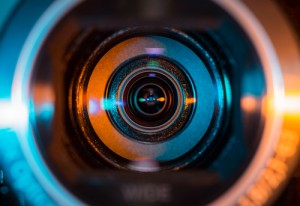 In our six-month course, Linda Joy and I teach a class called “Write Your Memoir Like a Movie.” The point of this metaphor—memoir as movie**—is to teach students how to get behind the lens of their own memoir camera and to think like the director of their own story. Too often we see aspiring memoirists not using the full range of their camera lens, instead staying completely zoomed out in the Big Picture, reluctant to zoom in and create the details of the scene they’re asking their reader to enter. Consider this passage from Smashed, the best-selling memoir by Koren Zailckas that we’ll be teaching this spring.
In our six-month course, Linda Joy and I teach a class called “Write Your Memoir Like a Movie.” The point of this metaphor—memoir as movie**—is to teach students how to get behind the lens of their own memoir camera and to think like the director of their own story. Too often we see aspiring memoirists not using the full range of their camera lens, instead staying completely zoomed out in the Big Picture, reluctant to zoom in and create the details of the scene they’re asking their reader to enter. Consider this passage from Smashed, the best-selling memoir by Koren Zailckas that we’ll be teaching this spring.
It’s seven o’clock when we towel off. A few months ago, it would have been twilight. But, since it’s summer, the sky hasn’t darkened past pale pink. Through the sliding glass door, the sun looks defiant. It sits bloated and orange above the lake’s public beach, like another inflatable ball kids forgot in the reeds when they left for the day.
Here, Zailckas dedicates a whole paragraph to show the reader the time of day, to invite them to see, through her camera lens, what the sun was like the summer she turned fourteen.
Zooming in is harder for memoirists than zooming out. Zooming out seems to come naturally. Zooming out is the broader lens we use to show “how things are,” to move forward the plot. In this next passage, also from Smashed, Zailckas uses specific incidents to describe a friendship, but it’s done using a zoomed out lens:
Inevitably, I perform many feats with Natalie that I have no real interest in doing. I hitchhike. I stuff two Hello Kitty T-shirts into my book bag while a clerk isn’t looking. I let her take an X-ACTO blade to my upper arm so we can be blood sisters. I even agree to third-wheel when she goes skinny dipping with the boy who lives down the lane.
In this passage, she zooms out, but into specific generalities, by which I mean she’s talking about the “kind of things” she would do with Natalie, giving us specifics but not using sensual details, to paint a picture of this friendship, to indicate that Natalie influences her, that Zailckas is a follower. Soon enough we find out that through Natalie, Zailckas is introduced to alcohol, which will be her downfall, and the subject matter of this memoir.
In my experience with memoirists, they tend not to zoom in because:
1. They don’t understand the difference between zooming out and in and therefore don’t realize they’re not zooming in.
2. They think zooming in is boring; they worry that if they allocate five sentences to a description of something like the way the sun hung on a particular evening that their reader will lose interest.
3. They’re hung up on the “truth,” and since memory is typically not so specific, they don’t feel they have the permission to zoom in as deeply as they might if they were writing fiction.
And so you have to find your way around these issues.
The easy solution to #1 is to read more memoirs. Look at how memoirists describe their surroundings—the sights, smells, sounds, tastes. These are the sensual details of your memoir and you must give them the attention they’re due.
#2 requires you to let go of judgment about your own writing. You must trust that the details are not indulgent, but instead they present an opportunity for you to be the director of your movie. You are creating an experience, and the more detailed your visuals, the more your reader will be drawn in. Your inner critic is the voice telling you to hurry along; don’t listen.
#3 is a big one, because some writers might feel they’re lying if they describe something with such specificity that they in fact only remember as generalities, but herein lies the key to writing good memoir. You must drill down into those generalities and bring them alive. You are not lying if you create a singular experience from something that you remember as having happened multiple times. It’s not wrong to describe a single family ski trip with specificity even if you are drawing the actual details from multiple annual trips. Memories are tricky, fuzzy things, and there is a world of difference between enhancing a scene with details you know to be true (even if you don’t specifically remember them happening on a particular date) and making something up. For more on this topic, and to ease your worried mind, read my post about Mary Karr and truth, and then read everything Mary Karr has to say on this topic.
And good luck!
Brooke
**Relevant post: Linda Joy’s “Your Memoir as a Movie”
I have made a start on my memoirs and I’m currently letting anyone read and judge them on my site http://chickenbadge.com
I am not a skilled writer so I have just told my stories as I would to a friend.
It is only now, after writing seven stories, that I am looking at sites such as yours to see how far wrong I have gone, according to what is accepted as good writing.
By doing it my way I had hoped to write in an original style, maybe it wasn’t a good idea?
Regards
Steve B